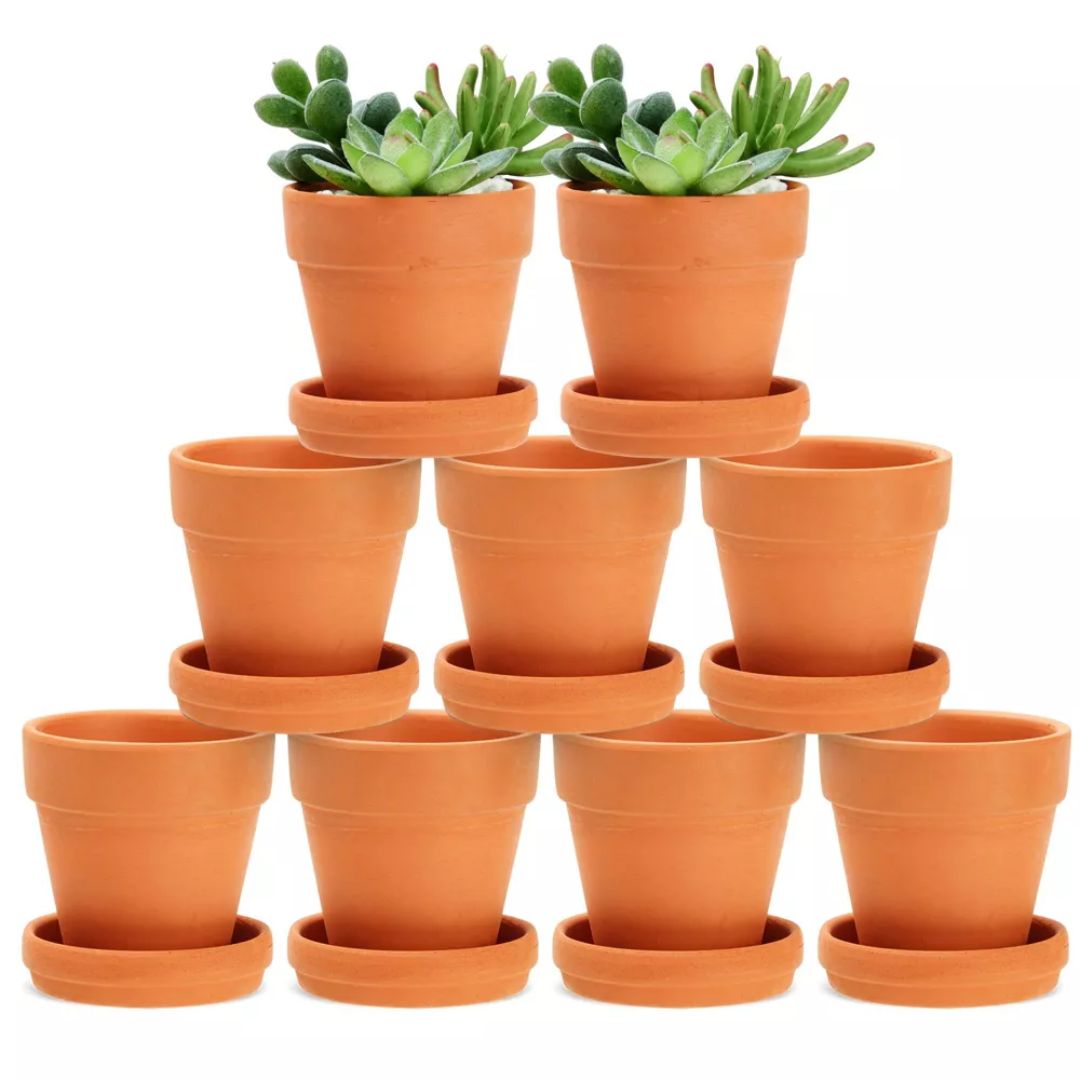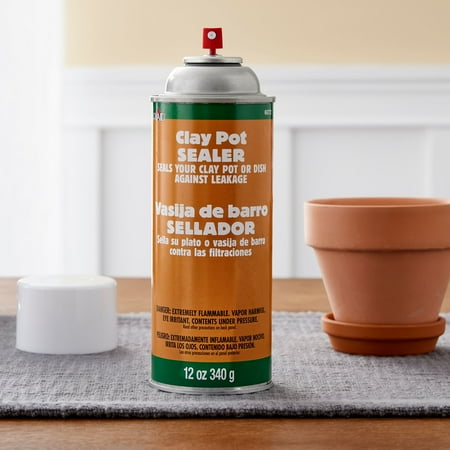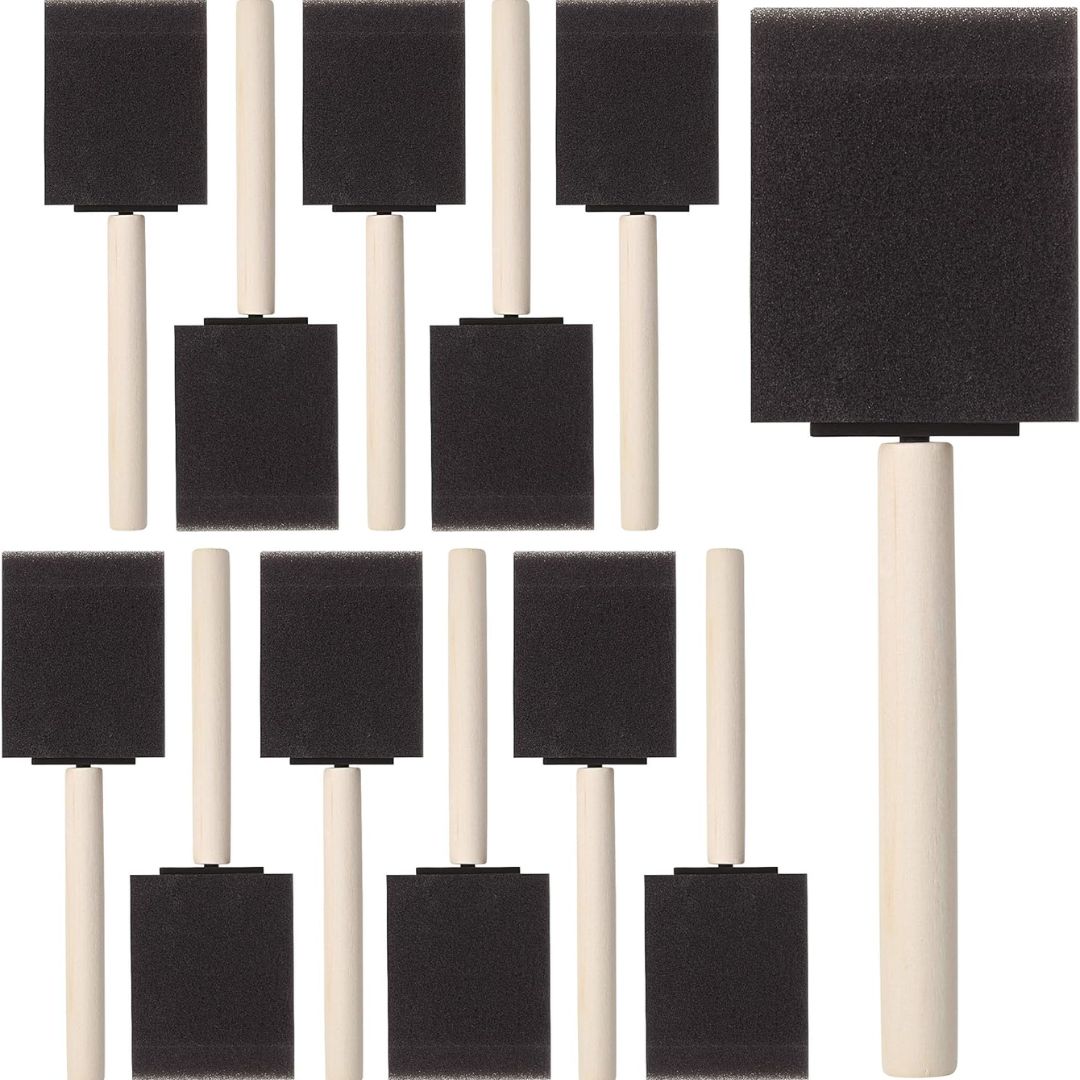Clay Pot Sealer is the "Unsung Hero" of Container Gardens — Here's How to Use It to Stop Potted Plants Drying Out
Terracotta clay pots may just need a little helping hand to get them to retain some of its water — here's how it can be done
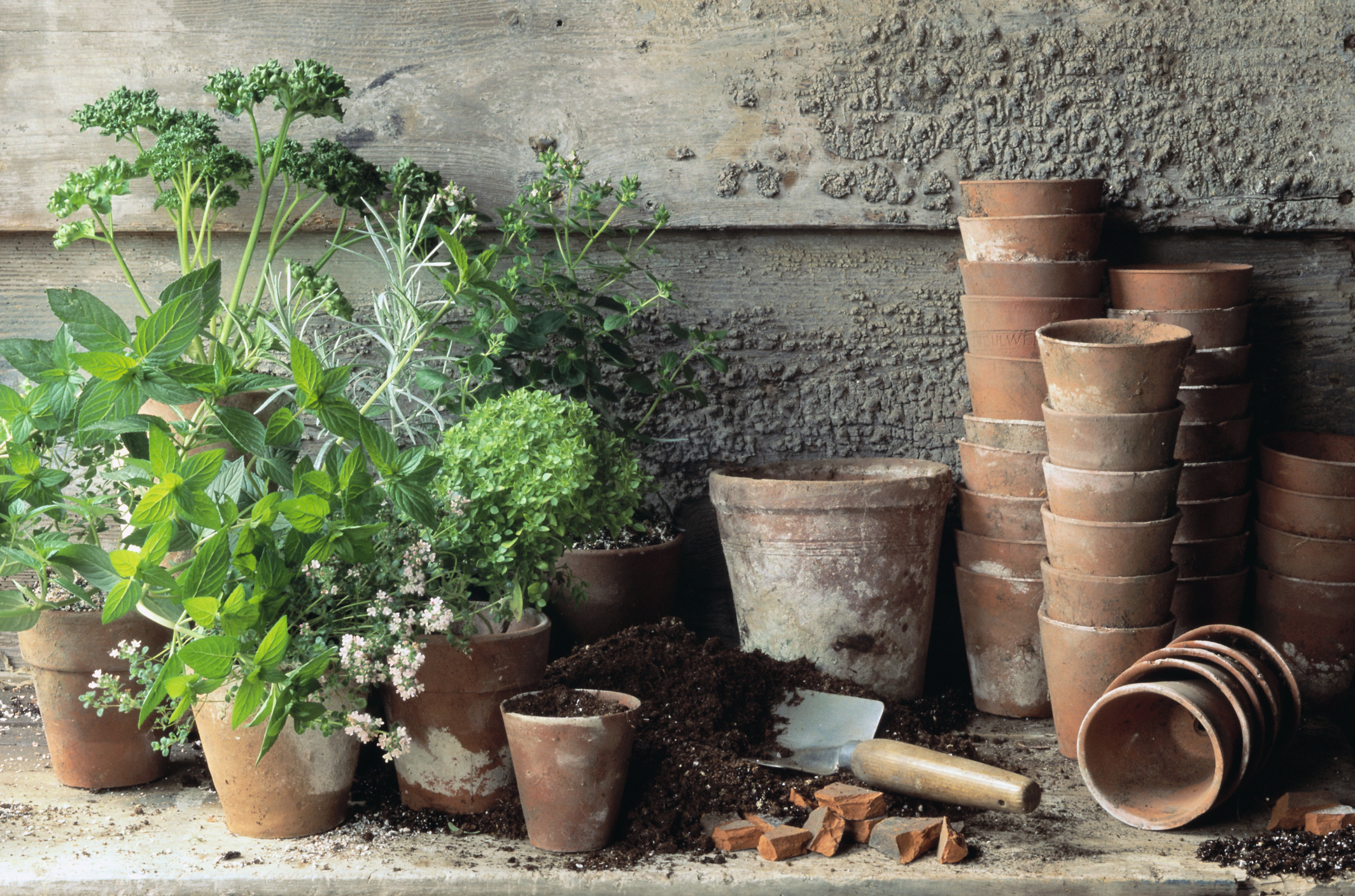

Lilith Hudson
Clay pots truly have a way of elevating and uplifting outdoor decor. It's a timeless classic with homely rustic tones of terracotta, which pairs beautifully with the bright green foliage gracing your garden space.
They're one of the most common types of pot, this stylish and chic container gardening pot can be inclined to seep out water a lot quicker than it should — and can, in turn, cause your beloved blooms to dry out. Not to worry though, there is always a solution at hand and clay pot sealers should do the trick. "Clay pot sealers are the unsung heroes of container gardening," says horticulturist Ben McInerney, founder of Go Tree Quotes. "These protective coatings, applied to terracotta or other porous clay pots, act like an invisible shield against the elements. In my years of experience, I've seen firsthand how a simple application of sealer can dramatically improve plant health and pot longevity".
Having happy and healthy flowers means making sure their home is secure and with clay pot sealers being the number one solution, it's important to understand when you should use it, how to use it and what it entails. Here is everything you need to know about clay pot sealers.
What You'll Need to Seal a Clay Pot

With a range of planter styles out there, once you've found your planter of choice — you'll want to give it some tender love and care, just as you do with your shrubs. Now with clay pots, we've established that they may need some maintenance and using a clay pot sealer will certainly help with that. But what tools do you need to start the process of sealing your clay pot?
Ben McInerney, founder of GoTreeQuotes.com.au tells us: "The tools needed for sealing clay pots are minimal, making it an accessible task for any gardener".
TOOLS:
• A Clay Pot Sealer. This Plaid Clay Pit Sealer priced at $11.24 on Amazon should do the trick!
• A Foam Brush. Ben says he prefers using this for even application but a regular paintbrush works well, too.
• Gloves to protect your hands.
What is Clay Pot Sealant For?
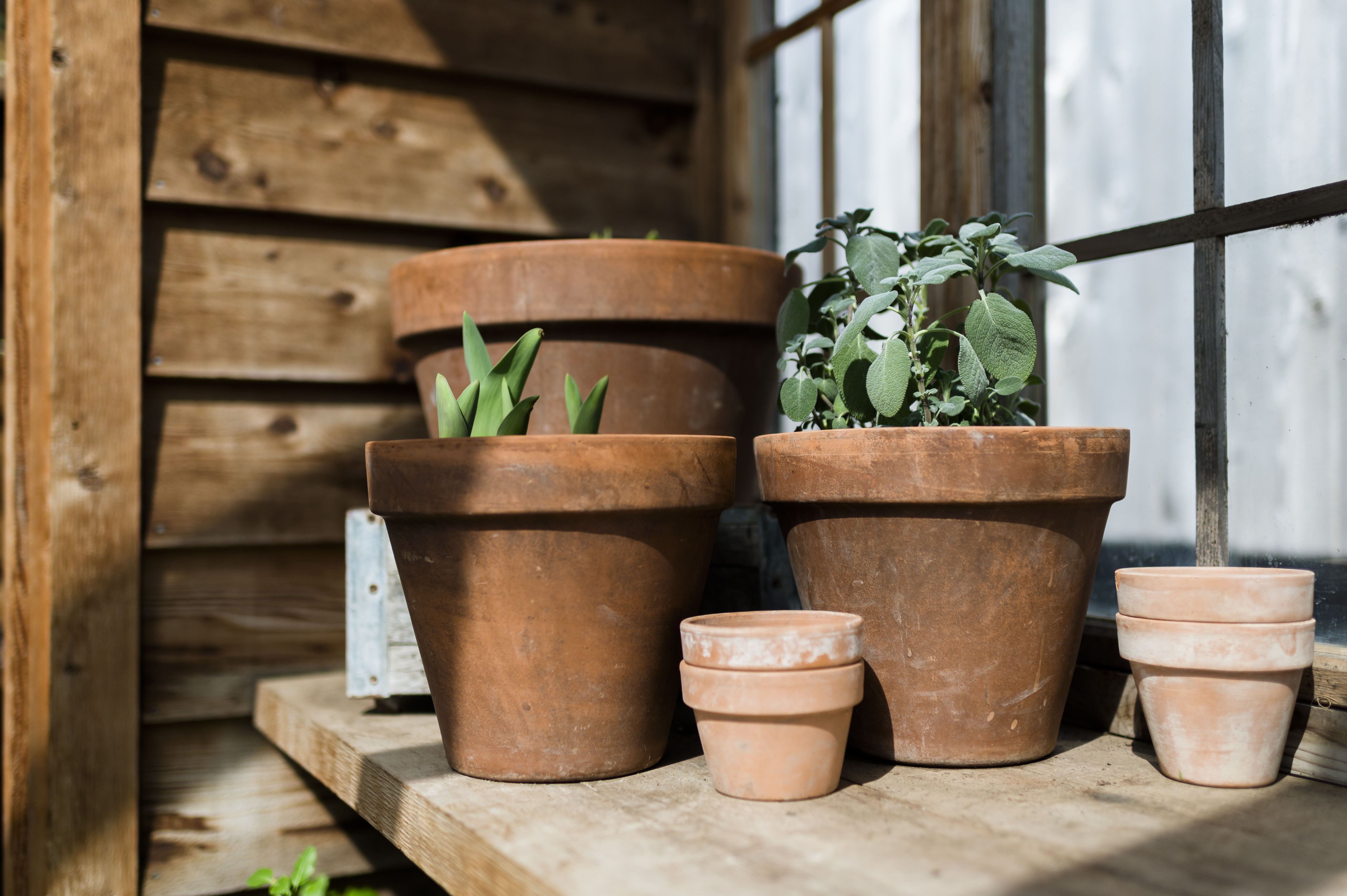
Clay pot sealant is true to its name — it essentially seals your clay pots for your much-loved container shrubs. As Alex Tinsman, a gardener at How To Houseplant, explains: "Clay pot water sealant is a coating that is applied to the inside of clay pots to help prevent water from seeping through the porous clay. The sealant is used to make the pot water-resistant, preventing the potting soil from drying out too quickly and reducing the likelihood of root rot".
Aside from the risks posed to your plant, failure to seal your terracotta pots could lead to damaged pots, too. For example, if you notice any white discoloration on your clay pots, that is a sign of mineral build-up — resulting from the lack of sealant on the pot.
"Over time, water seepage can cause cracking, staining, and other harm to the pot,' says Tom Monson, gardening expert and owner of Monson Lawn & Landscaping. "Using a water sealant is therefore crucial for maintaining clay pots both indoors and outdoors as it enhances water resistance, durability, and protection from natural elements".
How to Seal a Clay Pot
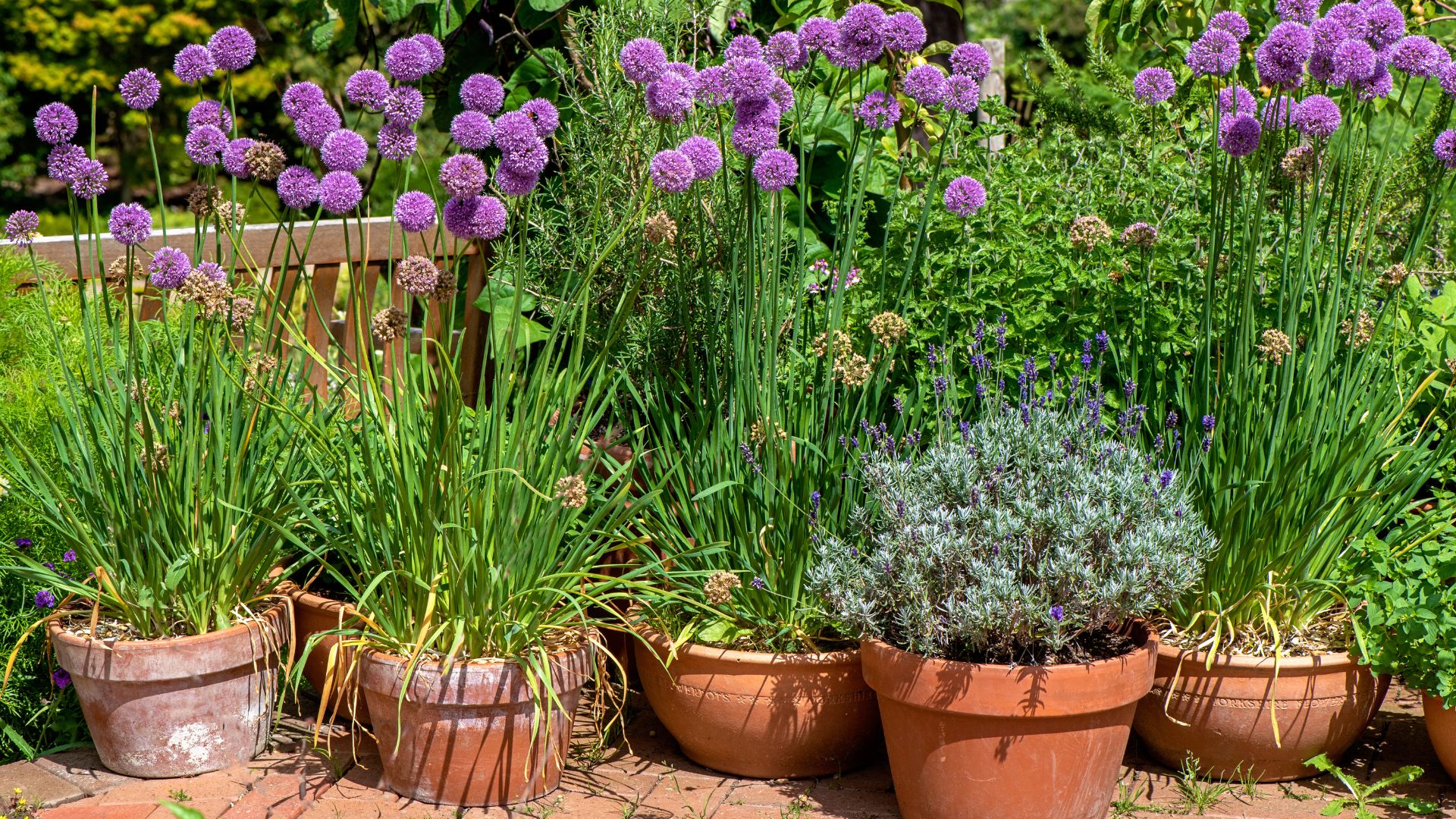
It's time to start on your clay pot sealing project — but how exactly is this done?
"Applying a clay pot sealer is straightforward, but attention to detail is key," says Ben. So without further ado, here's a step-by-step guide on how to seal terracotta pots.
Step 1: For the first step, Ben says it's crucial to "clean the pot thoroughly with water and a stiff brush, removing all dirt and debris".
Step 2: Next up, the expert says you should allow the pot to dry completely, which can take between 24-48 hours — depending on humidity.
Step 3: Find a space with good ventilation to apply the sealer.
Step 4: "If using a liquid sealer, pour it into a spray bottle for easier application," says Ben.
Step 5: You can then proceed to "apply the first coat of sealer, ensuring even coverage." For this, Ben says you must pay extra attention to the rim and inside of the pot.
Step 6: For the drainage holes, you should tilt the pot and apply sealer directly into the holes.
Step 7: Now it's time to let it dry. Ben says you need to allow the first coat to dry for about an hour.
Step 8: After an hour, and once the first coat has dried, you can then apply a second coat, "again, paying special attention to rims and holes," Ben adds.
Step 9: Let the pot cure for 24-48 hours before use.
Step 10: Last but not least, for best results, Ben recommends reapplying "annually, or when you notice increased water absorption".
When to Use a Clay Pot Sealer

It's important to protect your clay pots as soon as you can and Ben says timing is everything. "I always recommend sealing new pots before their first use — think of it as immunizing your pots against future problems," he says.
For pots already in use, Ben suggests an annual application as a good rule of thumb. However, the expert adds, "if you notice your pots drying out quicker than usual, or see white salt deposits forming, it's time for a fresh coat. In colder climates, make sealing your pots part of your fall garden prep to guard against winter damage."
Given that exposure to different weather conditions can lead to damaged pots, to make your outdoor pots more durable, sealing them as soon as possible is certainly the best bet. Michael Clarke, plant expert and the founder of Yardwork, agrees: "A clay pot sealer should be used for outdoor clay pots, since exposure to the elements and temperature fluctuations can damage a pot," he says. "Additionally, because potting soil dries out faster outdoors, the sealant will help preserve consistent moisture by preventing it from seeping out, helping to reduce the frequency of watering and keeping the roots from drying out and the plants from dying."
What are the Benefits of Clay Pot Sealers

"The benefits of using clay pot sealers are numerous and significant. They're not just about aesthetics – although they do prevent unsightly algae growth," says Ben. "Primarily, sealers help retain moisture, reducing watering frequency by up to 30%, in my experience. This is crucial in hot, dry climates where I've seen unsealed pots dry out faster than you can say 'water me!'".
He continues: "They also protect against frost damage in colder regions, preventing the heartbreaking sight of cracked pots after a harsh winter. Perhaps most importantly for the avid gardener, sealers make repotting a breeze by preventing roots from bonding with the clay — a lesson I learned the hard way after spending an entire afternoon wrestling with a root-bound ficus".
FAQS
Do You Need to Seal Terracotta Pots before planting?

It is highly advised to seal terracotta clay pots before planting, as this will protect your plant and its root from drying out quickly. It will also help to protect the pot itself.
Plant expert Michael Clarke from Yardwork tells us: "Sealers allow the soil to maintain its moisture, prevent unsightly white mineral stains from forming, and prevent the clay from breaking down".
"In my experience, clay pot sealers are as essential to container gardening as good soil and regular watering," says Ben McInerney. "They might not be the most exciting addition to your garden shed, but they're certainly one of the most useful. By extending the life of your pots and creating a more stable environment for your plants, sealers allow you to focus on what really matters — growing beautiful, healthy plants".
Do you need to seal clay pots indoors?
While it's particularly pertinent to seal your outdoor clay pots, the same benefits will apply to your houseplants, too. The only difference is that the temperature doesn't fluctuate as much in an indoor climate — so the risk to both plant and pot isn't as high.
Using a terracotta sealant is still a good idea, though, especially if you have humidity-loving plants like a monstera in them. It's not as essential for plants like succulents that come from arid climates and prefer drier soil, but a sealant won't cause any harm to them either.
To be on the safe side and ensure the longevity of your pot, it's best to use a clay pot sealer anyway.
Be The First To Know
The Livingetc newsletters are your inside source for what’s shaping interiors now - and what’s next. Discover trend forecasts, smart style ideas, and curated shopping inspiration that brings design to life. Subscribe today and stay ahead of the curve.

Faiza is the Renovation Editor at Livingetc. Faiza is currently renovating her small kitchen in her dainty apartment in London. Faiza previously worked for The Independent as a News Feature Writer, where she crafted lifestyle, entertainment, and news stories. She also worked as an Audience Editor for the newspaper for almost two years. Thriving in the busy newsroom, Faiza also spent her time crafting stories for Sky News as an SEO reporter, where she produced stories based on trending topics. Lifestyle and interior design is a space she has been interested in for quite some time, and as she blossoms in this field, she will continue to further her skills in design and gardening. Faiza has a background in SEO, social media, and reporting. Her passion for writing goes beyond her workm as she loves all things poetry and creative writing.
- Lilith HudsonFormer News & Trends Editor
-
 Burl Wood Decor Is 2025’s Most Coveted Comeback — Here’s How to Get the Storied Swirls for Less
Burl Wood Decor Is 2025’s Most Coveted Comeback — Here’s How to Get the Storied Swirls for LessIrregularity is the ultimate luxury, but you don’t need an antiques dealer to find it
By Julia Demer Published
-
 5 Garden Features That Instantly Add Value to Your Home — While Making Your Outdoor Space More Practical, too
5 Garden Features That Instantly Add Value to Your Home — While Making Your Outdoor Space More Practical, tooGet to know all the expert tips and tricks for making your backyard a standout selling point for your home.
By Maya Glantz Published
